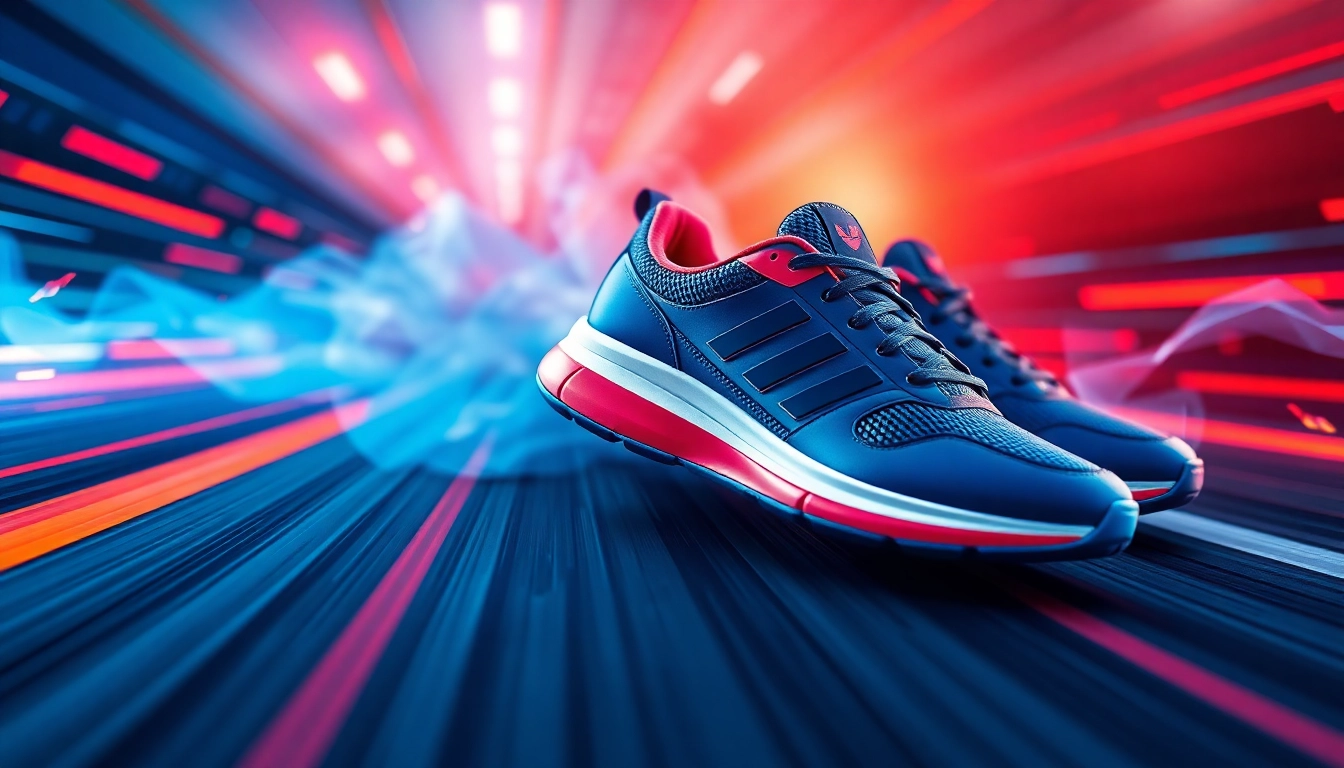
Understanding Sports Shoe Features
Choosing the right sports shoes is an essential aspect of enhancing your athletic performance and maintaining your foot health. With a myriad of options available, understanding the specific features of these shoes becomes critical. In this comprehensive guide, we will delve into the crucial attributes one should examine, beginning with the fit, comfort, durability, and technological innovations in sports footwear. For more information about specific models and how they perform, keep reading.
Importance of Fit for Comfort
Fit and comfort are integral to the functionality of sports shoes. Ill-fitting shoes can lead to discomfort, injuries, and even long-term foot problems. Proper fit is characterized by the following:
- Toe Box Space: Ensure there is enough room for your toes to wiggle without feeling cramped. A general rule is to have about a thumb’s width of space between the end of your longest toe and the shoe’s front.
- Heel Lock: The heel should fit snugly within the shoe without slipping. A good heel lock prevents blisters and enhances stability, especially during quick movements.
- Arch Support: Shoes should cater to your arch type—flat, neutral, or high arch. Proper arch support helps in evenly distributing body weight and reducing strain on feet.
Additionally, keep in mind that different brands may fit differently; always try on shoes before purchase.
Durability Factors in Sports Footwear
The durability of sports shoes is shaped by the materials used, the construction process, and the type of sports activity for which they are built. Here are key factors to consider:
- Material Quality: High-quality materials such as synthetic leather, mesh, and rubber contribute to a shoe’s lifespan. Synthetic materials are favored for their lightweight and breathable qualities.
- Shoe Construction: Look for shoes with reinforced stitching and quality adhesives. Goodyear welt construction, for example, enhances durability in footwear.
- Outsole Design: The outsole’s material and tread pattern play a significant role in durability. Rubber outsoles generally provide better durability and traction on various surfaces.
By focusing on these features, athletes can ensure they select shoes that will withstand rigorous use.
Technology Advancements in Shoe Design
The intersection of sports technology and footwear design has revolutionized how shoes support athletic performance. Here are notable innovations:
- Cushioning Systems: Technologies like gel cushioning, air pockets, and foam materials help absorb impact and increase comfort during use.
- Stability Features: Many sports shoes incorporate technology to enhance stability, such as medial posts or more rigid frames that prevent excessive foot pronation.
- Lightweight Materials: Advances in material technology have resulted in lighter-weight shoes, which can help improve speed and agility during performance.
Staying informed about these technological advancements can help athletes choose shoes that not only fit but also enhance their performance.
Common Challenges in Selecting Sports Shoes
Even with the vast options available, athletes often face challenges when selecting sports shoes. Understanding these challenges can help in making informed decisions.
Identifying the Right Type for Your Activity
Different sports require distinct types of shoes. For instance, running shoes prioritize lightweight design and cushioned soles, while basketball shoes are built for ankle support and traction. Here’s how to identify the right type:
- Activity Specificity: Consider the specific demands of your activity. Track and field shoes are different from cross-training shoes in terms of grip and flexibility.
- Surface Type: Different shoes are designed for different surfaces—road running shoes differ from trail running shoes, which focus on rugged terrain grip.
- Personal Style: Each sport has a culture of its own. Choosing a shoe that resonates with your style can increase your confidence and performance.
Understanding Size Variances Across Brands
Footwear sizing can vary significantly between brands, even if they are labeled the same. This inconsistency poses a challenge, as an individual may find their size in one brand does not translate to another. To navigate this:
- Try Before You Buy: Always try on shoes in-store where possible. Walk, jog, and perform movements to ensure the shoe fits correctly under physical activity.
- Know Your Brand Fit: Familiarize yourself with the sizing guides of your preferred brands, as they often provide specific measurements for different shoe lines.
- Read Customer Reviews: Pay attention to reviews that mention fit and sizing, as they can provide valuable insight into whether a shoe runs true to size.
Managing Budget vs. Quality Expectations
Finding the right balance between budget and quality is a common hurdle. Here are strategies to manage expectations:
- Invest in Core Gear: Prioritize spending on shoes integral to your sport. Often, a higher price correlates with better technology and durability.
- Look for Sales: Always be on the lookout for sales and off-season discounts, where you can find high-quality shoes at a reduced price.
- Assess Use Frequency: If shoes will see regular use, it’s worth investing more up front for comfort and durability.
Best Practices for Shoe Care and Maintenance
Caring for sports shoes is essential to extend their lifespan and maintain comfort and support. Below are some best practices for shoe care and maintenance:
Cleaning Techniques for Longevity
Regular cleaning of sports shoes is critical as dirt and grime can degrade material quality over time. Here are techniques to keep your shoes in peak condition:
- Gentle Cleaning: Use a soft brush and a mixture of mild soap and water to clean the outer parts. Avoid harsh chemicals that could damage the shoe.
- Drying Properly: Don’t expose shoes to direct sunlight or heat sources for drying. Instead, let them air dry naturally to maintain shape and integrity.
- Deodorizing: You can keep shoes smelling fresh by using baking soda or specialized shoe deodorizers.
When to Replace Your Sports Shoes
Knowing when to replace your shoes is crucial for foot health. Signs that may indicate it’s time for new shoes include:
- Visible Wear and Tear: Check for worn-out soles, cracks, and other signs of use. If you notice significant wear, consider replacing them.
- Loss of Cushioning: Test the cushioning by pressing down on the shoe’s midsole. If it feels overly compressed or lacks responsiveness, it’s time for an upgrade.
- Foot Pain: If you suddenly experience discomfort while wearing your usual shoes, it may be a sign that they are no longer offering the necessary support.
Storing Sports Shoes Properly
Proper storage of sports shoes can also aid in their longevity. Here are best practices for storing your footwear:
- Avoid Moisture: Keep shoes in a dry environment, as moisture can lead to mold and mildew. Consider using silica gel packets where you store your shoes.
- Use Shoe Trees: Placing shoe trees in your shoes will help maintain their shape and keep them from creasing.
- Organize by Activity: Store shoes by their specific use. Keep running shoes separate from cross-training shoes for easier access and fewer mix-ups.
User Reviews and Recommendations
User feedback can provide invaluable insights into the usability and comfort of sports shoes. This section will explore how to analyze user reviews effectively and compare popular brands.
Analyzing User Feedback for Insights
User reviews are often littered with experiences that can highlight a shoe’s strengths and weaknesses. Here’s how to analyze the feedback:
- Patterns in Ratings: Look for patterns in reviews, particularly those highlighting comfort, durability, or sizing issues. Consistent comments can indicate reliability.
- Expert Reviews: Seek out review sites that provide expert opinions alongside user feedback for a balanced view.
- Avoid Irrelevant Comments: Focus on reviews that pertain directly to the use case you’re interested in rather than general opinions.
Comparative Study of Popular Brands
Understanding how popular brands stack up against each other can inform your purchase decision. Conduct comparative studies that include:
- Feature Set: Compare features like arch support, cushioning styles, and the technologies each brand incorporates into their shoes.
- Longevity Reports: Research which brands have a reputation for durability based on user reviews.
- Price to Value Ratio: Weigh the cost of shoes against features offered. Sometimes a slightly higher price can indicate significantly better technology or comfort.
Expert Endorsements and Their Relevance
Endorsements from athletes and experts can lend credibility to a brand or product. While many endorsements are genuine, consider these factors:
- Alignment with Experience: Ensure that the expert’s specialty aligns with your needs. For instance, a marathon runner might favor different attributes than a basketball player.
- Objective Feedback: Look for reviews or endorsements that offer objective performance data rather than mere marketing hype.
- Cross-Referencing: Always cross-reference endorsements with user experiences to gauge reliability.
Where to Buy Sports Shoes: More Information
Purchasing the right sports shoes is just as important as finding the right model. This section will navigate where to find these shoes, balancing online options with local store experiences.
Online Retailers vs. Local Stores
Both online retailers and local stores provide unique benefits and drawbacks. Here’s how to evaluate your options:
- Convenience: Online shopping offers convenience and may provide a wider range of products. However, the inability to try them on limits your ability to assess fit properly.
- Expert Assistance: Local stores often have staff who can provide expert fitting advice and suggestions based on your specific needs.
- Return Policies: Research return policies for online retailers to ensure you have the option to return if the fit is unsuitable.
Benefits of Shopping During Sales and Promotions
Shopping during sales can yield significant savings. Consider the following benefits:
- Seasonal Discounts: Many retailers offer discounts at the beginning and end of seasons. This is a great time to look for high-quality shoes at a lower price.
- Bundle Offers: Look for bundles where stores provide discounts on pairs of shoes or other athletic gear which can help reduce overall expenses.
- Loyalty Programs: Joining a store’s loyalty program may offer exclusive discounts that aren’t available to the general public.
Tips for Safe Online Shopping
To ensure a safe and satisfying online shopping experience, keep these tips in mind:
- Check Security: Ensure the website’s URL begins with “https” to confirm security. Look for trust badges on the site.
- Read Reviews: Look for reviews about the retailer and their return policy, especially for how they handle faulty products.
- Track Your Orders: Opt for retailers that provide order tracking to keep updated on the progress of your shipment.





